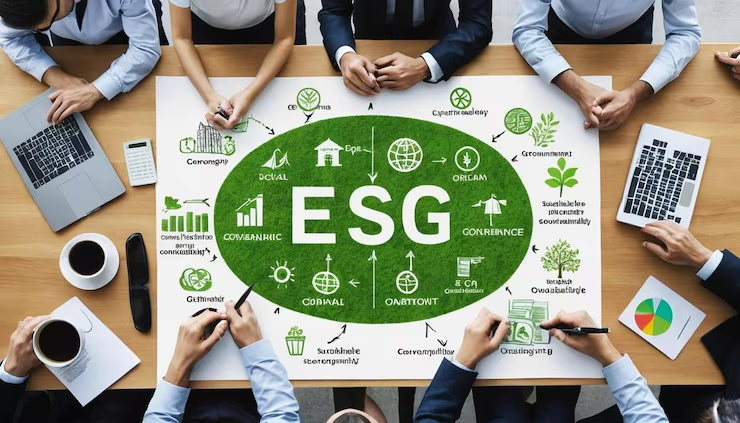Blockchain Revolution
How Carbon Credits Are Transforming Markets

Step into the future of sustainability, where blockchain technology and carbon credits are teaming up to rewrite the rules of global markets. Imagine a world where every tonne of carbon dioxide reduced or offset is tracked with unbreakable transparency, empowering businesses, governments, and communities to combat climate change with confidence. Blockchain is incrementally improving carbon market infrastructure, especially through initiatives like the Climate Action Data Trust (World Bank, IETA, and Singapore, launched in 2024), turning a once murky system into a more transparent and accountable system. From forest conservation projects to renewable energy initiatives, carbon credits are gaining traction, and blockchain ensures every credit is made more transparent and traceable through shared metadata, though integrity challenges remain.
The Power of Blockchain in Carbon Markets
Carbon markets, both compliance and voluntary, are growing in scale. Compliance carbon trading systems such as the EU ETS and China’s national ETS together drove global trading volumes to around €881 billion (~$950 billion) in 2023, while the voluntary carbon market remained much smaller at roughly $0.7 billion in 2023. Despite the difference in size, both markets face challenges around double counting, fragmented data, and transaction inefficiencies.
Blockchain is a decentralized digital ledger that records transactions securely and transparently. Each credit is logged as a unique token, timestamped, and linked across a network, making it nearly impossible to manipulate. This technology eliminates middlemen, reduces administrative costs, and ensures every credit’s journey, from creation to retirement, is traceable. For businesses, this means confidence in offsetting claims. For regulators, it offers a foolproof audit trail. Blockchain’s immutability is turning carbon markets into a trusted ecosystem, fueling growth and credibility. The Climate Action Data Trust is a live example: a public-good, blockchain-based metadata platform linking registries worldwide to prevent double counting. Standards like Gold Standard connected to it in late 2024.
How Blockchain Ensures Transparency

Transparency is the heartbeat of carbon markets, and blockchain delivers it in spades. Every transaction is recorded on a distributed ledger, visible to all authorized parties. This eliminates double-counting, where the same credit is sold twice, a problem that cost markets millions annually before blockchain adoption. Smart contracts—self-executing agreements coded on the blockchain—automate verification, ensuring credits meet strict criteria like additionality (emissions reductions beyond business-as-usual).
Traceability is equally vital. Emerging digital platforms now allow market participants to follow a credit’s journey — from issuance at a renewable energy project to its eventual retirement — strengthening accountability. Blockchain-based pilots and the Climate Action Data Trust are showing how shared ledgers can reduce double counting and improve confidence in carbon markets. While blockchain does not yet dominate the voluntary carbon market, these innovations are helping set new transparency standards, which in turn can attract premium pricing for verified, high-integrity credits.
Challenges and Solutions in the Blockchain-Carbon Nexus
Despite its promise, blockchain faces hurdles. Ethereum, the most widely used blockchain for tokenization projects, processes about 15–20 transactions per second on its main layer, while Layer-2 rollups scale throughput to thousands of transactions. With its switch from proof-of-work to proof-of-stake in September 2022 (the Merge), Ethereum’s energy use dropped by around 99.9%, addressing environmental concerns . In contrast, Bitcoin remains energy-intensive under its proof-of-work design.
Partnerships between carbon registries and tech firms are standardizing blockchain platforms, making integration easier.
Why Transparency Matters in 2025

Transparency is the fuel driving carbon markets forward. With carbon markets growing rapidly, investors and buyers are demanding higher integrity and accountability. Surveys show that companies are willing to pay premiums for high-quality, verified credits that demonstrate real impact.
Governments are also stepping up. China’s national carbon market, launched in 2021 and expanded in 2025 to cover steel, cement, and aluminum, now regulates around 8 Gt CO₂ (~60% of national emissions). Advanced digital monitoring and data-sharing systems are being explored to strengthen compliance.
For businesses, transparent credits boost reputation and market access. As net-zero targets tighten — India’s 2070 net-zero goal, the EU’s 55% cut by 2030 — demand is rising for credits that can be trusted to deliver genuine climate benefits. Digital tools, including blockchain-based pilots, can help ensure traceability and reduce risks of double counting, laying the foundation for a robust, scalable market.
The Future of Carbon Markets with Blockchain
The synergy of blockchain and carbon credits is evolving, with pilot initiatives exploring how digital ledgers can improve trust and efficiency. While blockchain does not yet dominate the voluntary carbon market, platforms such as the Climate Action Data Trust and institutional pilots (e.g., J.P. Morgan’s Kinexys) are showing how tokenization and shared registries can enhance transparency and reduce risks of double counting.
Innovations like carbon removal credits from direct air capture and large-scale reforestation projects are also gaining traction, offering buyers more tangible climate solutions. The Integrity Council for the Voluntary Carbon Market (ICVCM) has issued Core Carbon Principles to set global standards for quality and integrity, which digital tools — including blockchain pilots — can help support.
Globally, developing nations are exploring how blockchain and other digital innovations can help monetize carbon projects and attract finance. Early pilots have shown potential to empower local communities while meeting corporate offset demands, creating opportunities for more inclusive participation in carbon markets.
Join the Transparency Revolution
Blockchain and carbon credits are reshaping how we fight climate change, bringing unmatched transparency to markets. While adoption is still evolving, this technology is showing real potential to strengthen integrity and trust in carbon trading. At World of Circular Economy, we are actively exploring how blockchain and other digital innovations can support sustainability in the future. Learn more at www.worldofcircularconomy.com. Let’s work together to build a transparent and sustainable tomorrow!




